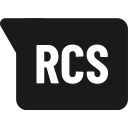In today’s digital landscape, Software as a Service (SaaS) platforms are becoming ubiquitous, providing businesses with tools that enhance productivity and collaboration. One of the most promising advancements in this realm is the integration of Rich Communication Services (RCS) experiences. By understanding the synergy between SaaS and RCS, platform providers can significantly enhance user engagement and overall functionality. This article delves into why SaaS platforms should consider incorporating RCS experiences into their product features.
Understanding SaaS Platforms and RCS Experiences
Defining SaaS Platforms
Software as a Service (SaaS) is a cloud-based service model where software applications are hosted on remote servers and accessed via the internet. This removes the need for physical installations and complex configurations on individual devices. SaaS solutions can range from customer relationship management (CRM) systems to project management tools, offering businesses enhanced flexibility and scalability.
SaaS platforms typically operate on a subscription-based model, allowing users to access the latest features and updates seamlessly. This ensures that businesses can benefit from continuous improvements without dealing with outdated software. Furthermore, SaaS solutions promote collaboration, enabling teams to work together in real-time from different locations. The ability to integrate with other cloud services and applications further amplifies the potential of SaaS, allowing organizations to create a customized tech ecosystem that meets their specific needs. This interconnectedness not only streamlines workflows but also enhances data sharing and communication across departments, ultimately leading to improved productivity and efficiency.
The Basics of RCS Experiences
Rich Communication Services (RCS) represents a significant evolution in messaging technology. Unlike traditional SMS, RCS offers a multimedia-rich experience that incorporates images, videos, and interactive elements. With capabilities such as read receipts, typing indicators, and carousel displays, RCS fosters a more engaging and dynamic communication channel.
The integration of RCS within SaaS platforms can not only enhance user interaction but also provide companies with analytical insights about user engagement. Businesses can tailor their communications based on user behavior, leading to personalized experiences that resonate more strongly with their customer base. Moreover, RCS supports branded messaging, allowing companies to maintain their identity and enhance customer trust through consistent visual elements. This branding capability, combined with the rich media features of RCS, enables businesses to create compelling marketing campaigns that capture attention and drive conversions. As organizations increasingly seek to differentiate themselves in a crowded marketplace, leveraging RCS as part of their SaaS strategy can be a game-changer in how they connect with customers and prospects alike.
The Intersection of SaaS and RCS
The Role of RCS in SaaS
RCS serves a pivotal role in enhancing the functionality of SaaS platforms. By allowing for more interactive communication, RCS can improve customer support experiences, making them more efficient and responsive. For instance, instead of waiting for emails or calls, users can receive immediate assistance through RCS-enabled messaging. This immediacy not only reduces frustration but also fosters a sense of connection between the user and the service provider, which is crucial in today’s fast-paced digital environment.
Additionally, RCS facilitates marketing communications directly through the messaging interface. Businesses can send promotions, updates, or reminders directly to users’ devices, enhancing visibility and engagement compared to traditional email marketing efforts. The ability to incorporate rich media, such as images, videos, and carousels, allows brands to craft visually appealing messages that capture attention and drive action. This level of engagement can significantly boost conversion rates and foster brand loyalty, as customers feel more informed and valued.
Benefits of Integration
Integrating RCS into SaaS platforms offers numerous benefits, including improved customer satisfaction and increased engagement rates. With rich media capabilities, businesses can showcase products or provide tutorials via messaging, ensuring customers have all the information they need at their fingertips. This not only enhances the user experience but also empowers customers to make informed decisions quickly, which is particularly beneficial in sectors like e-commerce and service-based industries.
Moreover, RCS integration can streamline workflows within SaaS applications. For example, notifications can be sent directly via RCS to inform users of important updates or actions needed within the platform, thereby reducing missed communications and improving task completion rates. This real-time communication can be especially advantageous for teams working remotely or across different time zones, as it ensures that everyone stays aligned and informed. Furthermore, the analytics derived from RCS interactions can provide valuable insights into user behavior, allowing businesses to tailor their offerings and communication strategies more effectively.
In addition to these operational advantages, the integration of RCS into SaaS platforms can also enhance security measures. With RCS, businesses can implement two-factor authentication and send secure links for verification, adding an extra layer of protection for sensitive information. This is particularly crucial in industries that handle confidential data, such as finance and healthcare, where compliance with regulations is paramount. As SaaS continues to evolve, the synergy between RCS and SaaS will likely pave the way for more innovative solutions that prioritize both user experience and security.
Exploring the Technical Aspects of Integration
Key Considerations for Integration
When integrating RCS features into SaaS platforms, several technical considerations must be evaluated. These include compatibility with existing systems, security protocols, and user privacy. Ensuring that RCS features align with the overall architecture of the SaaS platform is critical for seamless functionality. This alignment not only facilitates smoother interactions but also enhances the overall user experience by providing a cohesive interface that users can easily navigate.
Furthermore, scalability is an important factor as user demands grow. SaaS providers need to ensure that their infrastructure can handle an increase in communication volume without compromising performance. Proper testing and optimization are essential to ensure a smooth rollout of RCS features. This includes stress testing the system under various load conditions to identify potential bottlenecks and ensure that the infrastructure can dynamically adjust to fluctuations in user activity. Additionally, implementing robust analytics tools can provide insights into user behavior and system performance, allowing for proactive adjustments and improvements.
Overcoming Potential Challenges
As with any technological integration, challenges may arise when incorporating RCS into SaaS platforms. Some users may be unfamiliar with RCS functionalities, which may require additional user education and support. Providing tutorials and resources can help mitigate these concerns. Interactive guides, webinars, and FAQs can empower users to fully leverage RCS capabilities, ultimately enhancing their engagement and satisfaction with the platform.
Additionally, ensuring a consistent user experience across various devices and operating systems is crucial. Developers must thoroughly test RCS interactions to identify and resolve potential issues that could hinder user engagement. This includes not only testing on different devices but also considering variations in network conditions, as connectivity can significantly impact the performance of RCS features. Collaborating with device manufacturers and network providers can further enhance the reliability of the service, ensuring that users receive a high-quality experience regardless of their circumstances. Moreover, maintaining open lines of communication with users for feedback can help developers continuously refine and improve the RCS integration, fostering a user-centric approach to development.
The Impact on User Experience
Enhancing User Engagement
The integration of RCS experiences can significantly enhance user engagement within SaaS platforms. By allowing users to communicate directly in a rich, visual format, businesses can create an interactive environment that encourages engagement. Users are more likely to respond to and interact with messages that include images, buttons, and other multimedia elements.
This increased engagement is particularly beneficial in customer support scenarios, as users can receive real-time assistance while having a visual representation of their queries or concerns. For instance, a user experiencing difficulties with software can send a screenshot directly through the chat, allowing support agents to provide tailored solutions more quickly. Ultimately, a more engaging interaction can lead to higher customer satisfaction and retention rates. Moreover, the ability to incorporate personalized content, such as user-specific recommendations or updates, further fosters a sense of connection and relevance, making users feel valued and understood.
Streamlining Communication
RCS allows SaaS platforms to streamline communication channels seamlessly. With the added benefits of read receipts and interactive elements, users can have a clearer understanding of their interactions without the need for back-and-forth emails or phone calls. This streamlined communication fosters a more productive working environment. Additionally, the ability to send messages that can include dynamic content—such as live updates on project status or notifications about new features—ensures that users are always informed and engaged with the platform.
Incorporating RCS also means that responses can be structured. For example, SaaS platforms can use buttons for users to confirm appointments, respond to inquiries, or access additional resources, reducing the time taken to complete actions and enhancing overall efficiency. This structured approach not only simplifies the user experience but also minimizes the cognitive load on users, allowing them to focus on their tasks rather than navigating complex interfaces. Furthermore, the integration of RCS can facilitate collaborative efforts, enabling teams to share updates and feedback in real-time, thus fostering a culture of transparency and teamwork that is essential for success in today’s fast-paced digital landscape.
Future Trends in SaaS and RCS Integration
Predicted Developments
As the demand for real-time communication escalates, the integration of RCS experiences into SaaS platforms is expected to grow. Future developments may include further enhancements in AI-driven communication, where RCS can be used in conjunction with chatbots to provide even more immediate responses and personalized communications. This synergy between RCS and AI could lead to more sophisticated interactions, such as predictive messaging that anticipates user needs based on previous interactions, thereby creating a more seamless experience.
Additionally, advancements in security and data encryption will likely improve, ensuring that user interactions via RCS remain safe and confidential. As businesses increasingly prioritize data security, RCS can offer capabilities that align with compliance regulations and user privacy concerns. The implementation of end-to-end encryption and robust authentication processes will not only protect sensitive information but also build trust with users, fostering a sense of security that is paramount in today’s digital environment. Furthermore, the integration of blockchain technology could provide an additional layer of security, ensuring that data integrity is maintained throughout the communication process.
Preparing for the Future of SaaS and RCS
To prepare for the future of SaaS and RCS integration, businesses need to stay informed about emerging trends and technologies. Continuous training for team members on RCS functionalities will be essential to ensure they can leverage the full potential of this communication tool. This training should not only cover the technical aspects of RCS but also emphasize the importance of user experience design, enabling teams to create engaging and intuitive interfaces that enhance user interaction.
Moreover, engaging in user feedback will provide valuable insights into how RCS features are being utilized, allowing for ongoing improvements and enhancements. As companies evolve, so too should their approach to utilizing RCS in SaaS platforms, ensuring that they remain at the forefront of innovation. This could involve regular surveys and focus groups to gather user opinions, as well as A/B testing different RCS functionalities to determine which features resonate most with users. By fostering a culture of continuous improvement and adaptation, businesses can ensure that their RCS offerings remain relevant and effective in meeting the needs of their clients.
In addition to these strategies, organizations should also consider forming partnerships with tech innovators to stay ahead of the curve. Collaborating with startups and tech firms specializing in RCS can provide access to cutting-edge tools and insights that can enhance service offerings. By leveraging these partnerships, companies can not only improve their RCS capabilities but also expand their overall SaaS ecosystem, creating a more comprehensive solution for their users.
Ready to Elevate Your SaaS Platform with RCS?
Embrace the future of business messaging with nativeMsg, the RCS Business Messaging Creator. Transform your text messaging into interactive experiences that captivate your audience and drive results. With our easy-to-use platform, you can create, send, and optimize RCS messages that outperform traditional SMS. Increase engagement, conversion rates, and customer satisfaction with rich, interactive content. Don’t miss out on the opportunity to revolutionize your communication strategy. Get Started today and see the difference RCS can make for your business.
Free Trial
Get Started With RCS
Business Messaging!
Unlock the power of RCS and revolutionize your customer engagement.





